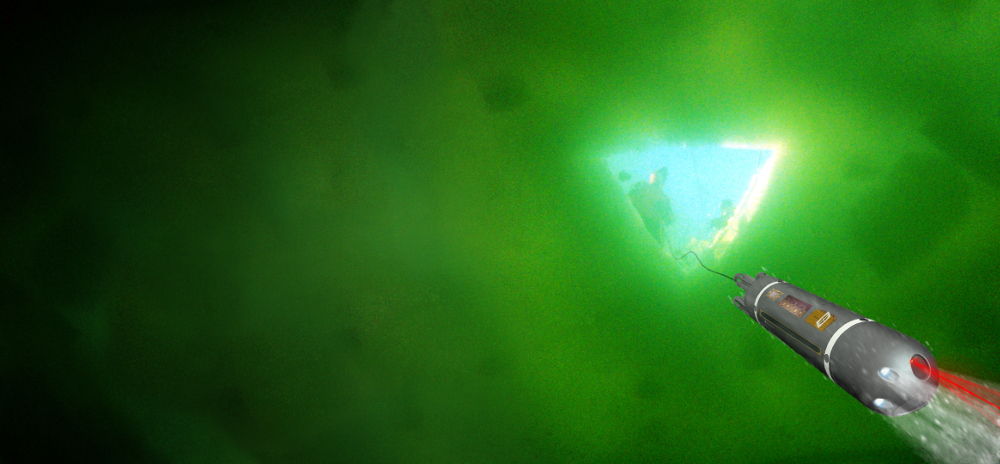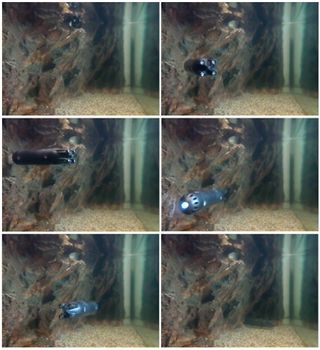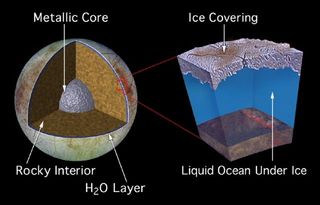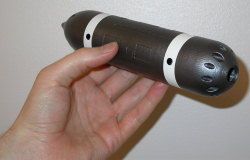Tiny Submersible Could Search for Life in Europa's Ocean

One of the first visitors to Jupiter's icy moon of Europa could be a tiny submarine barely larger than two soda cans. The small craft might help strike the right balance between cost and capability for a robotic mission to look for alien life in the ocean beneath Europa's icy crust.
The idea for the incredible shrinking submarine originally came from NASA’s Jet Propulsion Laboratory (JPL) in California and Uppsala University in Sweden. Such a vehicle would help keep mission costs low at a time when launching objects into space can still cost tens of thousands of dollars per kilogram. The mission concept also would have the advantage of only requiring a small borehole drilled through the ice covering Europa's surface.
"What I think is exciting with this is to be able to explore previously inaccessible areas, to explore where no "man" has explored before," said Jonas Jonsson, an engineer now with Stinger Ghaffarian Technologies Inc. at NASA Ames Research Center in Moffett Field, Calif. [See Photos of Jupiter's Icy Moon Europa]
A paper study of the miniature submersible first came from NASA JPL researchers and Greger Thornell’s Swedish team at Angstrom Space Technology Centre of Uppsala University. But Jonsson, an original member of the Swedish team, refined the submersible concept by building and testing parts of it for his Ph.D. thesis.
Scientists have gravitated toward the possibility of life on Europa ever since the Voyager 2 mission first scouted out the icy moon from afar in 1979. Voyager 2's images and data hinted at the existence of a liquid water ocean lurking beneath Europa's icy surface — a huge body of water bigger than all of Earth's oceans combined.
From Earth to Europa

The existence of Arctic bacteria living under extreme frigid conditions on Earth suggests that life could possibly survive on icy Europa as well. But any life on Europa would only survive by hiding deep beneath Europa's crust — an icy covering about several kilometers (1 or 2 miles) in thickness — because of the radiation from Jupiter's magnetosphere bombarding the moon's surface.
Get the Space.com Newsletter
Breaking space news, the latest updates on rocket launches, skywatching events and more!
Such intense radiation means a robotic lander digging a few feet into Europa's icy surface would likely find no organic traces or signs of life. Instead, a robotic mission might have better luck by going deep beneath the icy crust to study Europa's ocean.
Jonsson envisions the tiny submarine named Deeper Access, Deeper Understanding (DADU) taking on the Europa challenge in his 2012 Ph.D. thesis for Uppsala University in Sweden. The submarine could first get its feet wet by exploring similar watery environments on Earth where its small size could prove exceptionally useful.
"A mission to explore Lake Vostok in Antarctica, which is believed to have been isolated from the rest of the world by kilometers of thick ice for millions of years, would of course be the 'Holy Grail' mission, and a real proof of concept for a future mission to explore the oceans thought to exist underneath some of the frozen moons in the solar system, such as Europa and Enceladus," Jonsson explained.
How it works

The DADU submersible would use eight small thrusters to maneuver around the underwater world. A fiber optic tether would connect DADU to a surface lander or station — a way to recharge the submersible's lithium-ion batteries and allow for remote control by a human operator. On-board software would allow the submersible to automatically dodge obstacles or stay at a certain depth underwater.
The Swedish team created a series of miniaturized instruments and sensors for the dream submersible. DADU has a forward-looking camera with a small laser to capture high-resolution video and to gauge the distance, size and shape of underwater objects.
But a huge challenge came from shrinking everything down to incredibly small sizes. The sensor for measuring the conductivity, temperature and depth of water is smaller than a fingernail. [See Images of a Research Station in Antarctica ]
The submersible's sonar device alone could fit within a matchstick box, Jonsson said. Such a device uses piezoelectric material that can vibrate to create acoustic sonar pulses and read reflected pulses or vibrations as electrical signals.
Jonsson also tested the idea for the submersible's sampling device for collecting tiny life forms on Europa — a microfluidic device smaller than a human thumb with a special filter to trap tiny microorganisms.
Making the future

The first prototypes of the DADU submersible were made of plastic from 3D printers that allowed the team to quickly "print" the digital designs into real objects. But they envision the real submersible being built from a titanium alloy in order to survive the harsh temperatures and intense pressures of underwater environments.
Next up, the Swedish team hopes to further refine the miniaturized instruments. They also need to build the full integrated systems with all the miniaturized electronics before they can seriously test the submersible's capability to survive a frigid ocean — whether on Earth or on Europa.
"I don’t think there are any particular technological breakthroughs required," Jonsson said. "There exist possible solutions for the technological barriers; however, further developments and optimizations are required for such a mission to succeed."
Getting down beneath the ice is still far from simple. Any Europa mission designed to penetrate the moon's icy surface would require a mole-like drill to melt its way through the ice. The submersible would also need kilometers of tether connecting it to a surface lander or station in order to communicate with its remote human operator.
Nobody is seriously planning a landing mission on Europa yet. But the European Space Agency aims to launch its JUpiter ICy moons Explorer mission (JUICE) to make the first thickness measurements of Europa's icy crust starting in 2030. NASA also has begun planning a Europa Clipper mission that would study the icy moon while doing flybys in a Jupiter orbit.
This story was provided by Astrobiology Magazine, a web-based publication sponsored by the NASA astrobiology program.
Follow SPACE.com on Twitter, Facebook and Google+. Original article on SPACE.com.
Join our Space Forums to keep talking space on the latest missions, night sky and more! And if you have a news tip, correction or comment, let us know at: community@space.com.
Jeremy Hsu is science writer based in New York City whose work has appeared in Scientific American, Discovery Magazine, Backchannel, Wired.com and IEEE Spectrum, among others. He joined the Space.com and Live Science teams in 2010 as a Senior Writer and is currently the Editor-in-Chief of Indicate Media. Jeremy studied history and sociology of science at the University of Pennsylvania, and earned a master's degree in journalism from the NYU Science, Health and Environmental Reporting Program. You can find Jeremy's latest project on Twitter.













